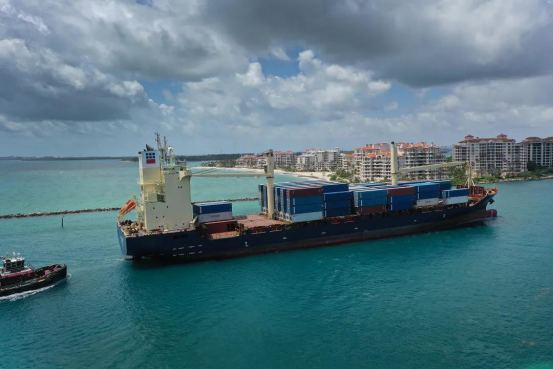Future is Uncertain, But Dealers Still Have Options
You would be hard-pressed to find a tire dealership that has not been impacted in some way or another by the ongoing shipping crisis.
From extended delivery delays to sky-high freight rates, the slowdown continues to throw a monkey wrench into supply chains - and many dealers are shouldering the burden.
What’s happening today? When will the shipping crisis end? What can dealers do in the meantime?
In terms of the origin of what’s been causing this slowdown and the big spike in freight rates, it’s really all down to the disruptions caused by the COVID-19 pandemic.
The effect of that was firstly to make cargo volumes moved in ships extremely volatile, whereas normally, these volumes are much more easily predictable. And then coupled with that is that shipping lines’ response to this volatility has been to change their capacity of ships offered into the market.
And the effect of that has then stoked problems further down the line across the container supply chain, particularly in regard to the availability of shipping equipment - that is, the empty containers that are used to move the cargo.
The other thing to add here is that (in) many supply chains that tire manufacturers, ause it has had to. The very low freight rates that have been the case for over a decade have made the trade particularly unprofitable for some players and quite challenging, so therefore they’ve had to be lean. And the leanness of this container supply chain has been really tested during the COVID-19 pandemic.
The cost to ship a 40-foot container from the port of Shanghai to the port of Los Angeles was typically around $1,500, pre-pandemic, and since then, the price of doing that now has increased four-fold to over $6,000. So there’s been a big increase in freight rates.
And if you look at the trade from Asia into Europe, the increase in freight rates there has been almost seven-fold, so it’s not just North American cargo owners who are feeling the pain.
The elevation in these freight rates is due to two things, principally. One has to do with the disruption we’ve seen since the start of the pandemic. But I think the other factor - which is very significant and has more longer-term implications for freight rates - is that carriers have become much better now at managing capacity.
The industry is far more concentrated, to the point where a small number of carriers control a
large part of the market. And we think, therefore, that cargo owners need to face really what is a new normal of much higher freight rates to come.
We don’t think rates will necessarily rise much further over the next few years, but I think we are in an era where people will need to pay more money to ship cargo. I think there will be some drop-offs in some spot rates and some premium rates.
Cargo owners, in some cases, are paying $15,000 to $20,000 a box in order to secure particular sailings and secure particular equipment types. Expect to see some of these premium rates drop off, in time.
In the first half of last year, we saw this very sharp contraction in trade as the global economy closed up due to COVID-19 lockdowns. And therefore in response to that, shipping lines significantly cut capacity. On some trade lanes, capacity was cut by as much as 30% through canceling sailings. And the effect of this was to heavily disrupt the recycling of shipping containers.
So if you look at most trade - particularly those that are heavily imbalanced, (like) the trade between Asia and North America - the lines need to recycle lots of empty containers back to Asia in order to have a sufficient number available to fill new cargo, because there isn’t enough trade moving from North America back to Asia.
That recycling of containers is critical in terms of maintaining the availability of containers. That was heavily disrupted. And that meant that when the trade recovered during the second half of last year - (which) was a very sharp and strong recovery - there were not enough shipping containers at the right place. And that was the start of the major constraints to available capacity.
At the same time, shipping lines were adding sailings in order to (accommodate) this big spike in cargo demand. Therefore, the impact later on - as you got more toward the end of the year - (was that) we started to see a build-up of congestion in ports. That was partly the effect of COVID-19 restricting some of the labor availability in these ports.
And also, ports are fairly rigid in terms of their capacity opportunity because they are highly capital-intensive and their ability to respond to a big change in shipping through-put is heavily constrained.
The impact, then, of reduced labor availability and the inability to scale up to meet this big spike in shipping demand is that (ports) became heavily congested. You had a lot of empty containers building up around the west coast of the U.S. and you had a huge shortage of containers back in Asia. So this created a gridlock in the system.
